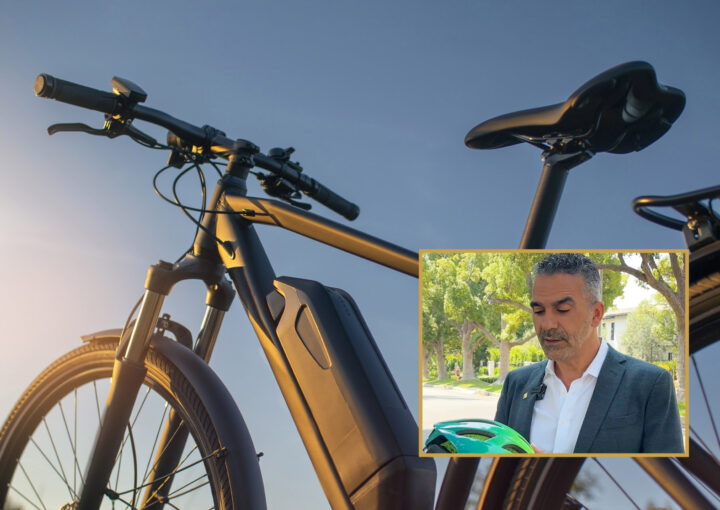Ever hopped into an Uber or Lyft and immediately felt uneasy about the driver? Maybe they seemed distracted, tired, or even a little too enthusiastic about getting you to your destination? We’ve all been there. But now, imagine stepping into a car where the driver is never distracted, always alert, and never in a hurry to get anywhere. Welcome to Waymo – the future of transportation in Beverly Hills.
Waymo, Google’s self-driving car project, has been around since 2009 and has proven to be a game-changer in the world of autonomous vehicles. First launched in Phoenix, Arizona, Waymo expanded its operations to Los Angeles in 2022, and it’s slowly but surely making its way across the city, including parts of Beverly Hills. What makes Waymo stand out from traditional ridesharing services like Uber or Lyft is its unparalleled focus on safety and efficiency.
The Smart, Safe, and Sensible Ride
Imagine your vehicle has eyes all around it – sensors that can see everything, even things you can’t. That’s what Waymo offers. The car uses a combination of cameras, radar, and artificial intelligence (AI) to map out every intersection, street sign, and signal in its environment. In fact, Waymo’s technology can predict what’s happening around the vehicle, allowing it to make smarter, safer decisions before they even need to be made. This combination of custom maps and real-time sensor data ensures the car is always aware of its surroundings.
What does this mean for you, the passenger? It means your ride is not only efficient but incredibly safe. The Waymo system constantly analyzes the road ahead, using its advanced AI to determine the best, safest path. From detecting pedestrians and cyclists to anticipating other cars’ movements, Waymo is always one step ahead.
@etehadlaw As technology advances, we’re seeing the evolution of traditional ridesharing services like Uber and Lyft expanding to self-driving car services like Waymo. What are your thoughts about self-driving cars? Would you rather get into an Uber or Waymo? #waymo #uber #lyft #fyp #safetyfirst
♬ original sound – etehadlaw
Safeguards You Can Trust
What makes Waymo even more reliable than traditional rideshare options? The built-in safety mechanisms. Waymo goes beyond just having sensors in place to detect issues – it’s equipped with a second computer that runs in the background, monitoring for any potential failures. Additionally, it has a backup collision detection and avoidance system, ensuring that if anything goes wrong, the car can respond immediately. Whether it’s avoiding a stray object or reacting to unpredictable traffic, Waymo’s backup systems always have you covered.
And if you ever feel uneasy riding in a car without a human driver, don’t worry – you can opt for Waymo Assist, which provides a safety driver behind the wheel. This driver is there only to step in if absolutely necessary, but the vehicle will still be doing the driving. It’s the best of both worlds: the comfort of human presence with the innovation of autonomous technology.
Why Choose Waymo in Beverly Hills?
As of August 2024, Waymo has expanded its services to parts of Beverly Hills, specifically south of Santa Monica Boulevard. While the service area isn’t citywide yet, Waymo has been strategically rolling out its service based on demand and feedback. The company is gradually expanding its coverage, with more areas in Beverly Hills expected to be added in the future.
Why the gradual rollout? It’s all about ensuring safety and reliability, as well as gaining approval from local regulators. Waymo is committed to creating a seamless, efficient experience that evolves based on real-world use and customer feedback. As the popularity of autonomous vehicles grows, Waymo is likely to expand further across Beverly Hills and beyond.
If you’re excited about the future of transportation and want to see Waymo available in more areas of the city, you can help by contacting Waymo directly or by engaging with local community groups and officials. The more voices they hear, the more likely they are to consider expanding the service to other parts of Beverly Hills.

A Glimpse of the Future
Waymo is more than just a way to get from point A to point B – it’s a glimpse into the future of driving. Imagine a future where you don’t have to worry about traffic, a distracted driver, or even finding parking. Waymo’s autonomous vehicles are designed to take the stress out of driving, offering you a smarter, safer way to get around.
So, next time you’re in Beverly Hills, skip the traditional rideshare and opt for a Waymo. Whether you’re heading to a glamorous event or just enjoying a leisurely ride, you’ll experience the future of transportation today. After all, the future of travel is not just about getting to your destination – it’s about how you get there. And with Waymo, that journey is safer, smarter, and more efficient.
Love it or hate, should anything go wrong while in a Waymo, give Etehad Law a call; perhaps the mouse in the console fell asleep and you just need a little help waking him up!
Need a Ride share Accident Lawyer ?
At Etehad Law, our mission is to help victims of rideshare accidents navigate the legal complexities and fight for fair compensation. With our extensive experience in both traditional and emerging accident cases, we are ready to assist you. If you or a loved one has been involved in a rideshare accident, reach out for a consultation. We’re here to guide you through the process and advocate for your rights.





